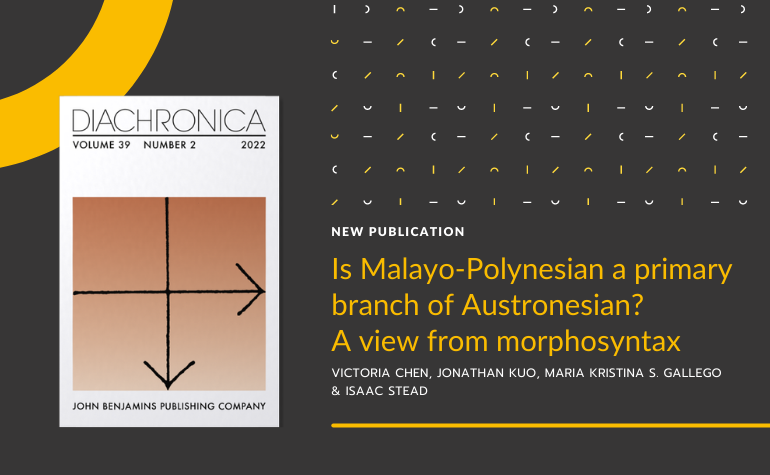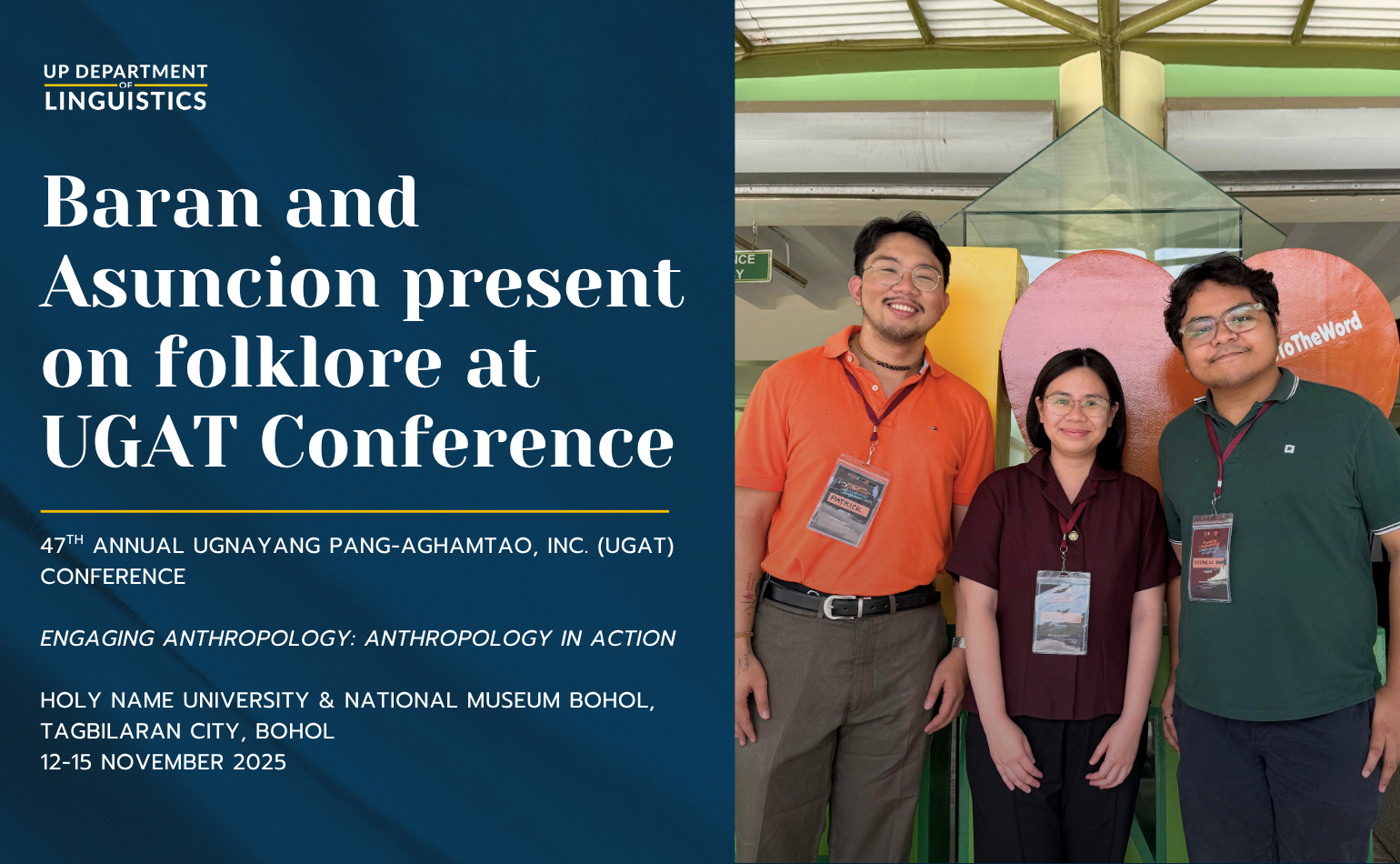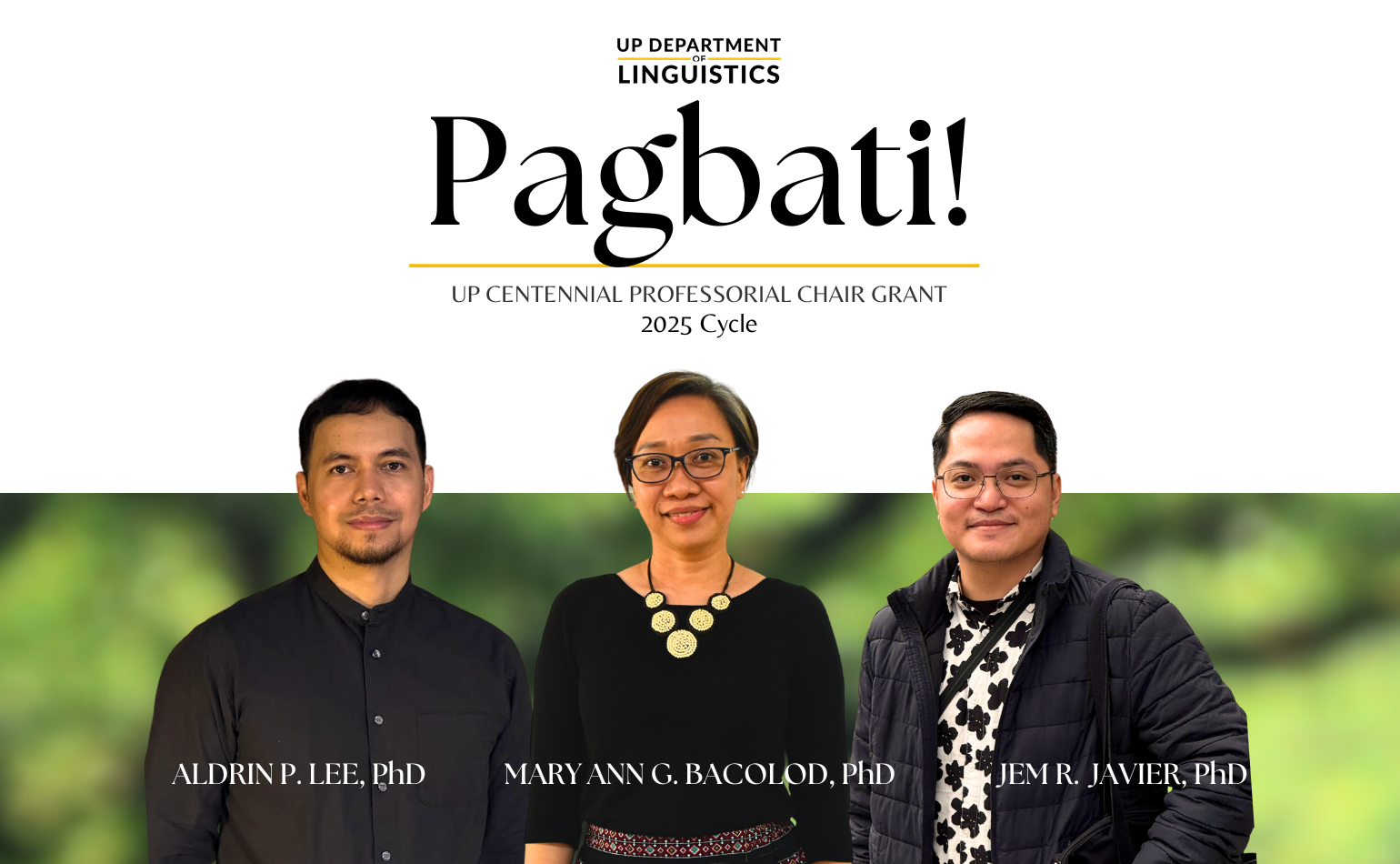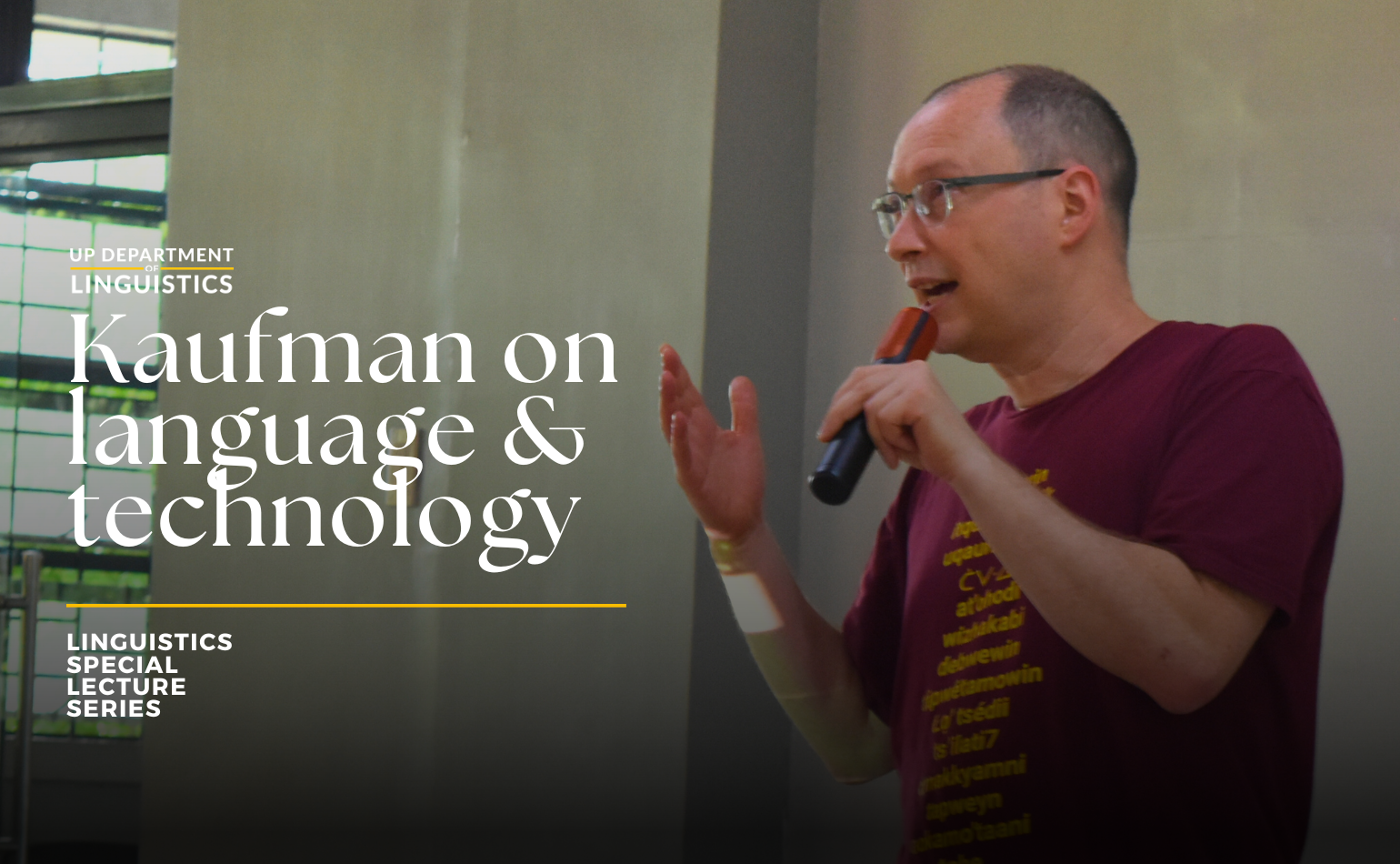
Congratulations to Asst. Prof. Maria Kristina Gallego on the publication of “Is Malayo-Polynesian a primary branch of Austronesian? A view from morphosyntax”, which she co-wrote with Victoria Chen (Victoria University of Wellington), Jonathan Kuo (National Taipei University of Technology), and Isaac Stead (Max Planck Institute for Evolutionary Anthropology). The article has just been published in Diachronica, an international journal for historical linguistics, and is now available online on the journal’s website. Below is the abstract of the paper.
Is Malayo-Polynesian a primary branch of Austronesian?
A view from morphosyntax
An understudied morphosyntactic innovation, reanalysis of the Proto-Austronesian (PAn) stative intransitive prefix *ma- as a transitive affix, offers new insights into Austronesian higher-order subgrouping. Malayo-Polynesian is currently considered a primary branch of Austronesian, with no identifiably closer relationship with any linguistic subgroup in the homeland ( Blust 1999, 2009/2013; Ross 2005). However, the fact that it displays the same innovative use of ma- with Amis, Siraya, Kavalan and Basay-Trobiawan and shares the merger of PAn *C/t with this group suggests that Malayo-Polynesian and East Formosan may share a common origin – the subgroup that comprises the four languages noted above. This observation points to a revised subgrouping more consistent with a socio-historical picture where the out-of-Taiwan population descended from a seafaring community expanding to the Batanes and Luzon after having developed a seafaring tradition. It also aligns with recent findings in archaeology and genetics that (i) eastern Taiwan is the most likely starting point of Austronesian dispersal (Hung 2005, 2008, 2019; Bellwood 2017; Bellwood & Dixon 2008; Carson & Hung 2018) and (ii) that the Amis bear a significantly closer relationship with Austronesian communities outside Taiwan (Capelli et al. 2001; Treat et al. 2005; McColl et al. 2018; Pugach et al. 2021; Tätte et al. 2021). Future investigation of additional shared innovations between Malayo-Polynesian and East Formosan could shed further light on their interrelationships.
The paper, which reexamines the position of the Malayo-Polynesian subgroup of languages within the Austronesian language family, was first presented at the 15th International Conference on Austronesian Linguistics held in 2021.
Published by UP Department of Linguistics



